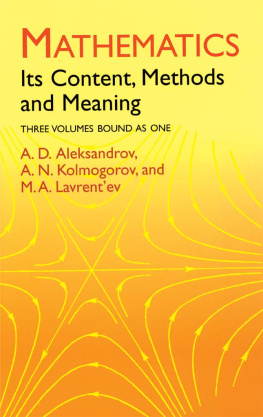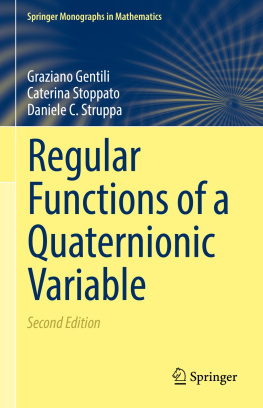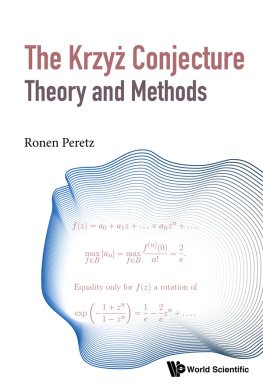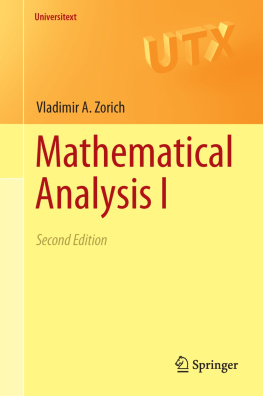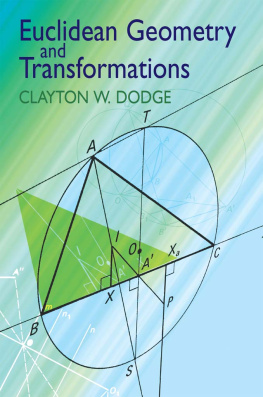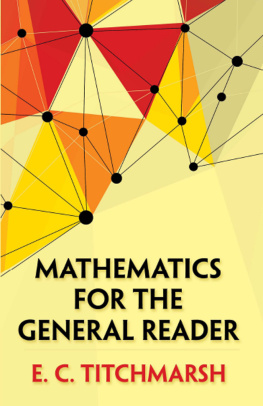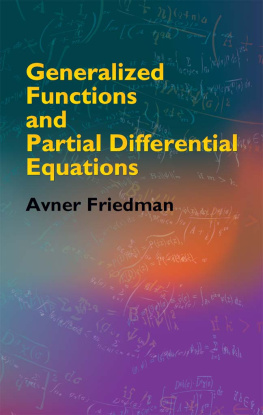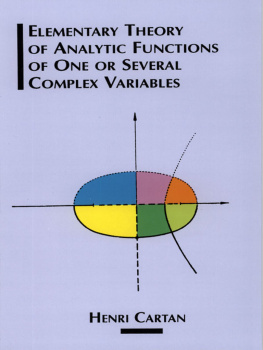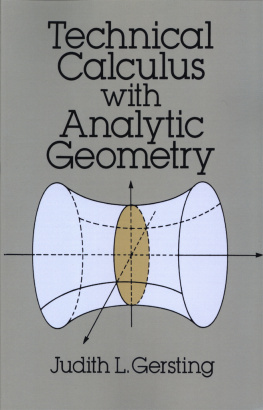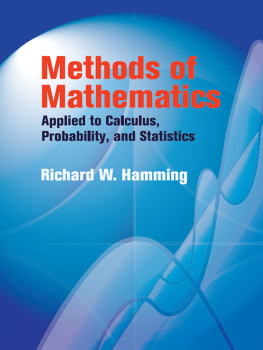MATHEMATICS
Its Contents, Methods and Meaning
THREE VOLUMES BOUND AS ONE

Edited by
A. D. Aleksandrov,
A. N. Kolmogorov,
M. A. Lavrentev
Translation edited by
S. H. Gould
DOVER PUBLICATIONS, INC.
Mineola, New York
Bibliographical Note
This Dover edition, first published in 1999, is an unabridged reprint in one volume of second edition of Mathematics: Its Contents, Methods and Meaning, published in three volume by The M.I.T. Press, Cambridge, MA, in 1969.
Library of Congress Cataloging-in-Publication Data
Matematika, ee soderzhanie metody i znachenie. English.
Mathematics, its content, methods, and meaning / edited by A.D. Aleksandrov, A.N. Kolmogorov, M.A. Lavrentev; translation edited by S.H. Gould.
p. cm.
Previously published: Cambridge, Mass., M.I.T. Press, 1964, cl963.
Includes index.
eISBN 13: 978-0-486-15787-0
1. Mathematics. I. Aleksandrov, A. D. (Aleksandr Danilovich), 1912-. II. Kolmogorov, A. N. (Andrei Nikolaevich), 1903-. III. Lavrentev, Mikhail Alekseevich, 1900-. IV. Title.
QA36.M2913 1999
510dc21
99-33023
CIP
Manufactured in the United States by Courier Corporation
40916308
www.doverpublications.com
PREFACE TO THE RUSSIAN EDITION
Mathematics, which originated in antiquity in the needs of daily life, has developed into an immense system of widely varied disciplines. Like the other sciences, it reflects the laws of the material world around us and serves as a powerful instrument for our knowledge and mastery of nature. But the high level of abstraction peculiar to mathematics means that its newer branches are relatively inaccessible to nonspecialists. This abstract character of mathematics gave birth even in antiquity to idealistic notions about its independence of the material world.
In preparing the present volume, the authors have kept in mind the goal of acquainting a sufficiently wide circle of the Soviet intelligentsia with the various mathematical disciplines, their content and methods, the foundations on which they are based, and the paths along which they have developed.
As a minimum of necessary mathematical knowledge on the part of the reader, we have assumed only secondary-school mathematics, but the volumes differ from one another with respect to the accessibility of the material contained in them. Readers wishing to acquaint themselves for the first time with the elements of higher mathematics may profitably read the first few chapters, but for a complete understanding of the subsequent parts it will be necessary to have made some study of corresponding textbooks. The book as a whole will be understood in a fundamental way only by readers who already have some acquaintance with the applications of mathematical analysis; that is to say, with the differential and integral calculus. For such readers, namely teachers of mathematics and instructors in engineering and the natural sciences, it will be particularly important to read those chapters which introduce the newer branches of mathematics.
Naturally it has not been possible, within the limits of one book, to exhaust all the riches of even the most fundamental results of mathematical research; a certain freedom in the choice of material has been inevitable here. But along general lines, the present book will give an idea of the present state of mathematics, its origins, and its probable future development. For this reason the book is also intended to some extent for persons already acquainted with most of the factual material in it. It may perhaps help to remove a certain narrowness of outlook occasionally to be found in some of our younger mathematicians.
The separate chapters of the book are written by various authors, whose names are given in the Contents. But as a whole the book is the result of collaboration. Its general plan, the choice of material, the successive versions of individual chapters, were all submitted to general discussion, and improvements were made on the basis of a lively exchange of opinions. Mathematicians from several cities in the Soviet Union were given an opportunity, in the form of organized discussion, to make many valuable remarks concerning the original version of the text. Their opinions and suggestions were taken into account by the authors.
The authors of some of the chapters also took a direct share in preparing the final version of other chapters: The introductory part of .
A share in the work was also taken by several persons other than the authors of the individual chapters: by Ju. V. Prohorov.
Certain sections of Chapters I, 11,VII, and XVII were written by V. A. Zalgaller. The editing of the final text was done by V. A. Zalgaller and V. S. Videnskii with the cooperation of T. V. Rogozkinaja and A. P. Leonovaja.
The greater part of the illustrations were prepared by E. P. Senkin.
Moscow |
1956 | EDITORIAL BOARD |
FOREWORD BY THE EDITOR OF THE TRANSLATION
Mathematics, in view of its abstractness, offers greater difficulty to the expositor than any other science. Yet its rapidly increasing role in modern life creates both a need and a desire for good exposition.
In recent years many popular books about mathematics have appeared in the English language, and some of them have enjoyed an immense sale. But for the most part they have contained little serious mathematical instruction, and many of them have neglected the twentieth century, the undisputed golden age of mathematics. Although they are admirable in many other ways, they have not yet undertaken the ultimate task of mathematical exposition, namely the large-scale organization of modern mathematics in such a way that the reader is constantly delighted by the obvious economizing of his own time and effort. Anyone who reads through some of the chapters in the present book will realize how well this task has been carried out by the Soviet authors, in the systematic collaboration they have described in their preface.
Such a book, written for a wide circle of the intelligentsia, must also discuss the general cultural importance of mathematics and its continuous development from the earliest beginnings of history down to the present day. To form an opinion of the book from this point of view the reader need only glance through the first chapter in and the introduction to certain other chapters; for example, Analysis, or Analytic Geometry.
In translating the passages on the history and cultural significance of mathematical ideas, the translators have naturally been aware of even greater difficulties than are usually associated with the translation of scientific texts. As organizer of the group, I express my profound gratitude to the other two translators, Tamas Bartha and Kurt Hirsch, for their skillful cooperation.
The present translation, which was originally published by the American Mathematical Society, will now enjoy a more general distribution in its new format. In thus making the book more widely available the Society has been influenced by various expressions of opinion from American mathematicians. For example,... the book will contribute materially to a better understanding by the public of what mathematicians are up to.... It will be useful to many mathematicians, physicists and chemists, as well as to laymen.... Whether a physicist wishes to know what a Lie algebra is and how it is related to a Lie group, or an undergraduate would like to begin the study of homology, or a crystallographer is interested in Fedorov groups, or an engineer in probability, or any scientist in computing machines, he will find here a connected, lucid account.

